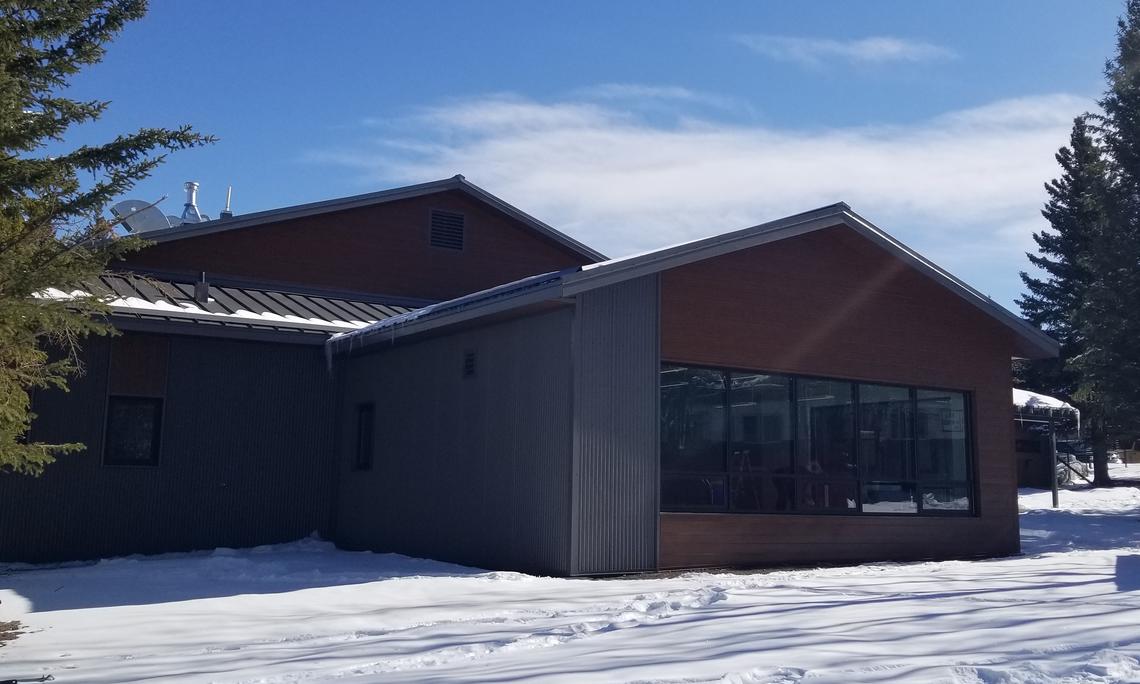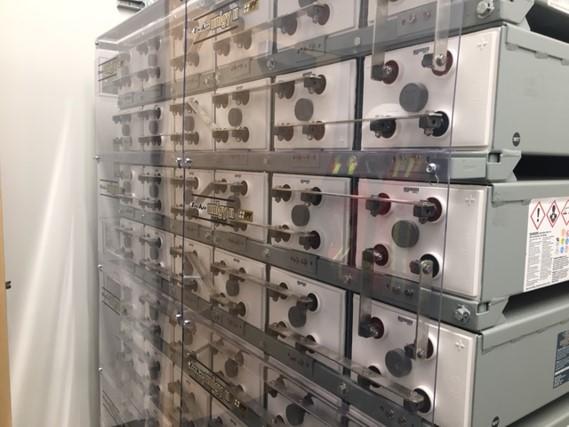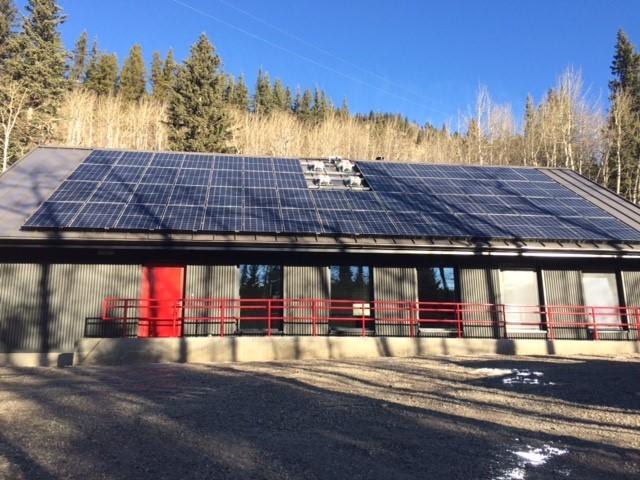Nov. 21, 2018
After 65 remarkable years, beloved Rocky Mountain research facility goes off-grid

Barrier Lake Research Station’s new exterior.
University of Calgary
For more than 65 years, the Biogeoscience Institute’s R.B. Miller and Barrier Lake field research stations have been a cornerstone of the University of Calgary’s mountain and foothills ecology, environmental and wildlife research. These frontline stations are now well equipped for researchers to continue carrying out their critical research while making a smaller environmental footprint thanks to recent upgrades through the Post-Secondary Institutions Strategic Investment Fund (PSI-SIF).
R.B. Miller and Barrier Lake stations are remotely located right where the research looking at wildlife and other responses to changes in the environment is carried out. These facilities are unlike any other in Canada, and the research that has been conducted there for decades is well recognized and unique worldwide. Rocky Mountain bighorn sheep and ground squirrel biology research specifically have driven the research program at R.B. Miller continuously for more than 30 years.
“The studies look at adaptation to change, either rapidly or over generations through genetics. This includes adaptation to climate change and changes in the health status of the animals, either caused by infectious diseases, parasites or other things associated with these changes,” says Dr. Andre Buret, associate vice-president, research.
The findings help governments better understand how environmental changes affect wildlife, which in turn can help drive their wildlife management plans. This collaboration is similarly important to give visibility to the public and engage the community in the university’s research activities and findings related to mountain and foothills ecology and environmental research.
“University of Calgary research in this area has been published in top international journals like Science because there is no other similar research that has been sustained for that long anywhere in the world,” says Buret. “The upgrades to the stations have made it possible to continue with these important endeavours.”

The R.B. Miller batteries can store up to three days’ worth of power, charged by solar PV panels.
University of Calgary
Post-Secondary Institutions Strategic Investment Fund ensures continued Rocky Mountain research program
While the two field stations continue to be instrumental in carrying out this important and unparalleled field research, the age and state of the 50-year-old buildings posed a significant risk to the ongoing research programs, and innovations were required.
Through PSI-SIF funding announced by the federal government in September 2016, both stations received a much-needed upgrade and are moving toward new advancements — including being able to operate completely off-grid. The PSI-SIF funding has helped improve the scale or quality of facilities for research and innovation, and improved the environmental sustainability of research and innovation infrastructure.
“Without this funding, the research conducted at the stations would have been significantly compromised and some of the projects may have simply been stopped. The ability to ensure a long-term research operation in the Rocky Mountains shows we’re willing to invest significant funding into this serious research,” says Buret.
“It allows us to really develop a strong collaborative spirit with the government and also with Parks Canada, and will hopefully entice researchers to take advantage of these facilities.”
The research projects conducted out of the Kananaskis stations also recruit significant student power through graduate programs and summer studentships, and with the upgrades, the research program has been given a new and fresh momentum.

R.B. Miller Research Station's new exterior with solar photovoltaic (PV) rooftop panels.
University of Calgary
Solar photovoltaic panels mean field stations can operate off-grid
One of the most notable PSI-SIF-funded improvements has been the move to make the R.B. Miller field station completely self-sustainable. It has been redeveloped as a high-performance off-the-grid cabin structure, ensuring low energy consumption with integrated mechanical and electrical systems. Solar photovoltaic (PV) panels on the roof charge the structure’s batteries, which store up to three days’ worth of power and will have a minimum impact on the environment as a result.
“It’s a great example of what we can do with funding to address the university’s sustainability needs,” says Buret. “By engaging the sustainability programs at the university, we are ensuring our mountain and foothills ecology, environmental and wildlife research and field stations will be a signature for sustainable University of Calgary research programs.
"It’s our desire to reduce our footprint, and this desire is supported by the entire community, the university and our government partners.”
Learn more about the RB Miller research field station’s history.
